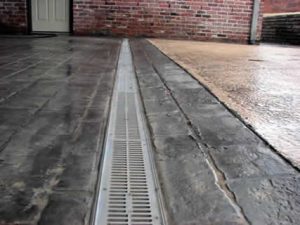If you think your facility doesn’t have a Class V underground injection well, you might want to check again. Recent enforcement action by EPA Region 9 has resulted in violations against facilities that failed to identify, register, and maintain their dry wells. If you don’t know what an underground injection well is, read on.
What is a Class V underground injection well?
An injection well is a shaft, hole, or other system that sends fluids from the surface underground. Subsurface fluid disposal poses a risk to underground sources of drinking water and is therefore regulated by EPA under the Safe Drinking Water Act. There are six types of injection wells (Class I through Class VI), used for a range of purposes (from oil production to mining to waste disposal). Most of these uses sound industrial, which leads some property owners to disregard the regulations altogether. However, let’s look a bit deeper into what constitutes a Class V underground injection well.
A Class V well is used to inject non-hazardous fluids underground. Fluids are injected either into or above an underground source of drinking water. There are dozens of types of Class V injection wells. An EPA study conducted in 1999 estimated that more than 686,000 Class V wells within 23 different categories were in operation throughout the U.S. Most Class V wells are “low-tech” and depend on gravity to drain fluids directly below the land surface. Some very common property features are actually regulated as Class V injection wells, and many are not even that deep:
- Septic systems that receive non-domestic wastewater

- Septic systems serving multiple residences or business establishments
- Cesspools
- Dry wells used to control flooding of residential basements
- Floor drains connected to a septic tank, dry well, or soil
- Stormwater drainage wells
- French drains and tile drains
- Recreational campground pit toilets and latrines
- Cooling water return flow wells used to inject water previously used for cooling
- Salt water intrusion barrier wells
- Motor vehicle waste disposal wells that receive or have received fluids from any facility that does any vehicular repair work
Endangerment by Class V wells occurs when they are used in a manner that transmits contaminants into or above underground sources of drinking water. If the fluids you place in the ground qualify as a hazardous waste under the Resource Conservation and Recovery Act (RCRA), your well is either a Class I or Class IV well, not a Class V well.
If you own a commercial or industrial property, you may want to take another look at your facility features and make sure you know whether you have a Class V injection well. If you have any wastewater or other fluids that eventually discharge underground through a pipe, septic system, catch basin, or dry well, you probably have a Class V injection well.
What to do if you have one?
There are some steps you can take to determine whether you have an injection well on your property:
- Identify all floor drains, septic systems, stormwater drainage devices and any other points where fluids are possibly being introduced below-grade.
- For each item identified in Step 1, determine the ultimate point of discharge.
- If no absolute determination can be made as to where a pipe ends, or if you determine that it ends with disposal to soil, you have a shallow injection well.
Owners or operators of Class V injection wells are required to 1) not endanger underground sources of drinking water and 2) register the injection wells with the UIC program at no cost. There is an online form [http://www2.epa.gov/uic/forms/underground-injection-wells-registration] for registering your well with EPA.
Is a permit required?
In most cases, an individual permit is not required. A Class V injection well is authorized or permitted by rule if the basic inventory information is submitted. The regulations allow use of an injection well to resume 90 days after submission of inventory information unless EPA (or authorized state) notifies the owner/operator that the use of the injection well may not resume. EPA may also request additional information. Even if a permit is not required, submitting the inventory information is mandatory.
 Bonnie Wisniewski is an environmental management consultant with more than 20 years of experience helping clients work toward their environmental compliance, performance, and risk management objectives. She is a Certified Hazardous Materials Manager (CHMM), Certified Professional Environmental Auditor (CPEA), and AARCHER division manager in Denver. Bonnie can be reached at [email protected].
Bonnie Wisniewski is an environmental management consultant with more than 20 years of experience helping clients work toward their environmental compliance, performance, and risk management objectives. She is a Certified Hazardous Materials Manager (CHMM), Certified Professional Environmental Auditor (CPEA), and AARCHER division manager in Denver. Bonnie can be reached at [email protected].